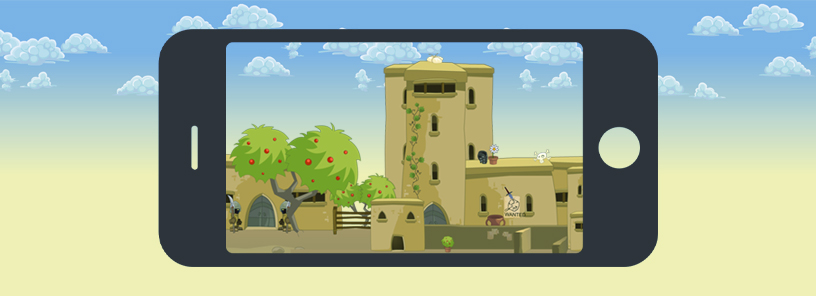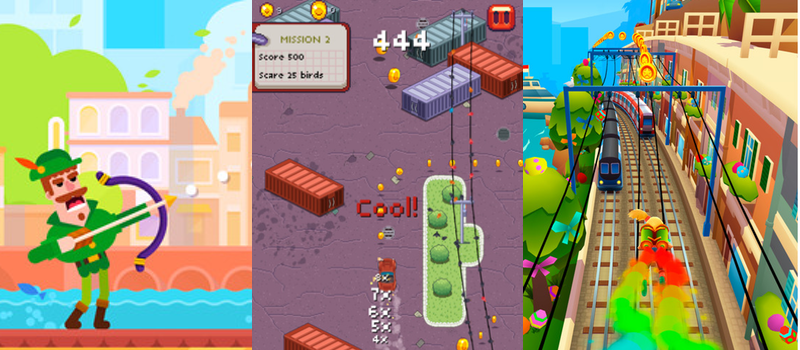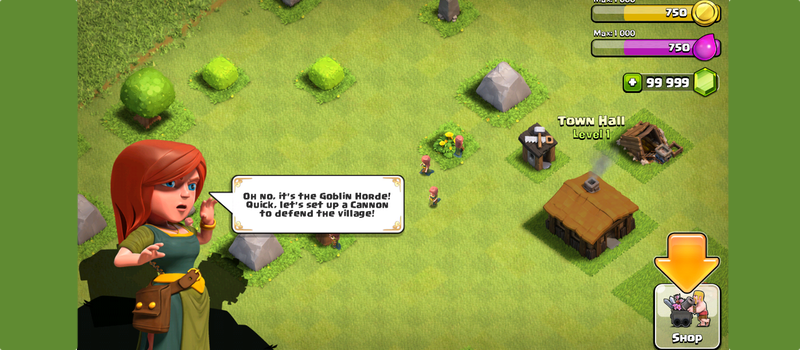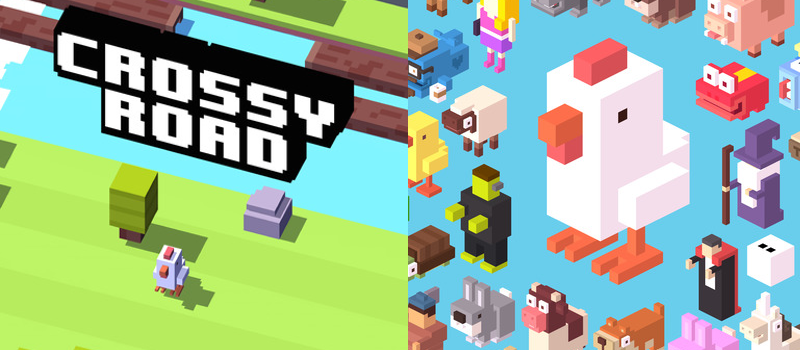
How do you know when your game is good enough to pitch to publishers?
Before you begin pitching to publishers, you need to make sure your game has all the qualities that they’re looking for. There are actually five important features that every publisher searches for when they’re reviewing games. It’s these five key factors that ultimately determine whether or not your game is ready to be published.
If your goal is to get a publishing deal, your game must have all of the following:
- Unique Gameplay
- Amazing Graphics
- Intuitive Experience
- Viral Potential
- High Replay Value
Let’s take a closer look at each of these …
#1 – Unique Gameplay
Publishers are interested in games with unique gameplay. Make no mistake about it, your gameplay must be unique. However, it also must be based on a proven game mechanic. This is important to publishers because they only have one shot with your game to make it a success. So, they want something that players will immediately be able to pick-up and understand. A game with crazy control schemes where you touch the corners of the screen to control your character might be fun and seem ‘unique’ to you and your friends, but to a publisher, it could also appear to be too risky. Try to make a game that is different but still familiar.
The ‘Model and Improve’ technique is one of the best methods to use when you’re trying to come up with unique gameplay concepts. We’re big believers of ‘modeling and improving’ here at Buildbox. It’s the secret to successfully making games. We discussed this method in detail in our previous post, ‘Making Games with Model and Improve.’ If you’re not familiar with the process of modeling and improving, it involves studying a product or in this case a game, then thinking of ways you can improve different aspects of it to turn it into something new and more innovative.
Model & Improve
When you’re applying this technique to generate game ideas, you start by researching and analyzing popular trending themes. Make a list and record your findings. Try to break down various parts of the game such as the gameplay, art style, monetization etc. Then brainstorm ways to improve or make those elements better in a new way.
The research process in this method alone will provide you with a nice list of proven game mechanics that you can base your game on. Simply model and improve on those concepts and you’ll be able to create a unique gameplay style that publishers will want.
#2 – Amazing Graphics
Have you ever noticed that every published game has amazing graphics? It doesn’t matter what type of game it is or the art style used, the graphics are always eye-catching. There’s a very important reason for this. The art in your game is what players and potential publishers will use to form their first impressions. Which can make or break your game’s success. Having amazing artwork is mandatory if you want to succeed. Publishers are looking for high-quality games that look polished and well put-together. Game art is also an extremely powerful selling tool. So, you have to bring your A-game in terms of art.
Remember, ‘A picture is worth a thousand words,’ and so is the graphics in your game.
When you have great graphics your game is able to transport players into that world to interact and explore. The art style and theme should set the game’s mood and provide players with entertaining experience. Your game’s artwork and style should be cohesive with your gameplay as well. Games like Clash of Clans, Bowmasters, Pixel Drifters, Subway Surfers and Color Switch are good examples of this.
 Don’t Skimp on the Art
Don’t Skimp on the Art
Your art is as important as your gameplay, especially to publishers. You simply can’t skimp here. Cutting corners when it comes to graphics is probably the biggest repeat offender we see with games. Take a long hard look at your game’s artwork. If you don’t feel like your graphics are as good as other Apple featured games or games you see in the top chart, then you need to think of ways that you can either improve your skill or consider hiring someone who can help.
There’s plenty of tutorials available online and on YouTube that will teach you how to make your own game art. We have a few helpful tutorials on making graphics also. If you have the budget you can buy graphics or hire an outsourcer from sites like Upwork or Freelancer.
#3 – Intuitive Experience
Everything in your game, from the UI screens to the gameplay itself, should be extremely intuitive for the player. People should be able to completely understand how to play your game from just seeing a video, and anyone you hand your game too, even children should immediately understand how to play it. This can be achieved a few different ways: You can have a very simple game in the style of Ketchapp, Nanovation or Fortafy, or you can have a really great tutorial like you would see in popular top grossing games such as Candy Crush and Clash of Clans.
Let’s quickly break down both of these methods …
The first method to creating an intuitive experience is to just make a simple game. Simple games have been dominating the charts since casual gaming became the norm. Many of the top current games are simple based tapping style games. Not only is this type of game popular among players, but it is also easy to pick-up. Instructions are usually minimal.
The Magic Formula … for Publishers
Simple style games with unique gameplay are also BIG with publishers like Ketchapp and Nanovation. Stack, Hop, ZigZag, Gyrometry, Brain Breaker, Endless Sky, and the Line Zen are good examples of some of the successful games that they’ve published. But here’s the interesting thing, each of these games are not only intuitive but they all have unique gameplay based on proven game mechanic, plus amazing graphics. There’s definitely a magic formula in the works here.
The second route that you can take is to add a tutorial. Not just any tutorial will do, it has to be a good game tutorial. A good game tutorial is always short, sweet with the intent to excite. Your tutorial will be a guide to all first-time players. So you need to nail it, right off the bat. You have a limited amount of time to show players how to play your game before they completely lose interest. Try to keep your tutorial short and to the point. Remember, your goal is to teach the player what to do. A good tutorial should explain the controls, quickly cover the most important or relevant game mechanics in text and also provide a visual display of how the game is played. The visual display can be in still screenshot or interactive tutorial similar to Candy Crush.
 Game Tutorials 101
Game Tutorials 101
If your game is more involved and keeping it short, isn’t that simple. Try to show them how to do the bare minimum to help them get started. And then as the game mechanics change introduce another short tutorial. Always try to shorten the tutorial when you can or break it up into smaller segments to appear throughout the game.
It’s also important to not come off rude or patronizing in your tutorial text. Avoid sarcasm and be careful with your wording. Keep your players’ demographic in mind when you’re creating your tutorial. Unless your game is actually geared towards a younger demographic, avoid using phrases that you would with a child such as, ‘Good Job.’
A good game tutorial should also excite. You want your players to be excited to play your game. It’s important to showcase your game a little bit during the tutorial. Think about what makes your game unique and cool and try to incorporate a sneak peek of that into the tutorial. This could be as simple as using an unlockable character or interesting power-up in the in-game tutorial to explain how the game works. Make your tutorial fun!
#4 – Viral Potential
Publishers want games with viral potential. Okay, I know what you’re thinking, “How do I make a game with viral potential?” Well, it’s easier than you may think. All you need is an ‘it factor’ or ‘wow’ feature that’s worth sharing for your game to have real viral potential. Anything can possibly go viral if it’s able to spark enough interest. This is yet another reason why having unique gameplay and great graphics in your game is so important.
Your game’s ‘wow factor’ can be a number of different things. Maybe your game has stunning graphics, cool special effects, creative unlockable characters, humorous sound effects, or a killer soundtrack that’s worth tweeting about. A game could also have virality if it has a hard-to-beat level that players find fun but extremely challenging.
Remember, they’re not looking for a game that’s gone viral, just one with potential. Your game should have sharing options built in, and a gameplay style that encourages sharing. If you can create one of those games that are hard to put down, then people will most likely want to share that experience with their friends.
What You Need To Go Viral
Focus on the experience, and try to build something that is more than just a “pick up and play game” … create something that gives a lasting feeling to the end user. Have a game that evokes an emotional response. Have a game that has a relatable character, a deep atmosphere, or perfectly balanced gameplay that drives people mad as they try to get to the next level. Evoke emotion and people will share.
Dong Nguyen’s Flappy Bird is a perfect example of how a game can evoke enough emotion to go viral. The simple-tap based arcade game was so challenging that players began to tweet and post about their frustrations on social media platforms. The game quickly went viral. People who had never heard of the game started to play the game out of curiosity. Within a week of going viral, Flappy Bird hit #1 in the charts held the position for 22 consecutive days.
#5 – High Replay Value
Replay value also called retention, has become the single most important factor to Publishers the past year. All publishers we talk to want to sign games that have a crazy high replay value, as this has a direct effect on two very important parts of their business:
- The success of their game
- The success of their future marketing efforts
The more people play your game, the more it will monetize. They’ll make more in-app purchases and see more ads. Also, this vastly improves the publishers marketing ability, because these active users will see the next game the publisher is releasing when they advertise the next game. This is the lifeblood for many publishers and will ensure the growth of their company. You want to always help facilitate that in any way possible!
Adding Replay Value
If you want to get published, create a game with a high replay value. To do this, first, you need to review and analyze your game. Then ask yourself, “If I was a player, why would I continue to play this?” If you can’t come up with a compelling enough response, then you’re missing that ‘replayability factor.’
Your game’s retention can be improved by increasing the overall challenge or through implementing a better reward system. Try adding different modes with increasingly higher levels of difficulty. If your gameplay is already challenging enough, integrating a high score tracker can help boost replay value also. Players enjoy competing against their friends’ scores and their own, especially if the game is fun to play.
Another option to the road to higher player retention is adding or improving upon the reward system. Hipster Whale’s Crossy Road is a great example of this. The game’s endless bonus rewards for continuing to play and unlockable characters encourages players to stick around and keep on playing. Adding a variety of interesting unlockable characters that players will want is a sure-fire way to add replay value to your game.
Publishers want games that have unique gameplay, amazing graphics that’s intuitive with viral potential and a high replay value. Make your game with all five of these key features in mind and getting published will be a breeze.





[…] game ideas, the latest game trends, how to market and boost your app downloads, connecting with publishers and much more is covered in this new […]
Excellent article, all the important points out together in one place. It sounds perfectly rational, almost common sense, but the explanations in this blog make it easy for even a novice to understand the underlying key points of successful game development.
We’re an avid Buildbox fans, it makes implementing the above strategies possible quickly.
Brijesh Singha
http://Www.essendonstudios.com
Thanks, Brijesh! :)
First i want to thank you for this article :) a very informative and helpful article.
But i have a question what are the pros and cons of being independent and sending your game to a publisher. And do you make money from downloads and 5 star ratings alone? thanks in advance tiana :)
Thanks :) Glad you found the article helpful. Buildbox founder, Trey Smith, has a really great article on ASO that breaks down the pros and cons of both that’s definitely worth reading. As far as money goes it usually varies depending on your game, publisher and other contributing factors. However, the more successful your game is the more you’ll benefit.
great article, when i imagine when i am a game player, i always look how the adds didn’t disturbing. it’s a big factor about comfortability
Thanks Zamiel, good point :)
Very informative article, thanks Tiana!
I have an idea that I’ve been pondering on, that seems to tick the boxes listed above.
Two questions I would have though are:
1. Should one put their ‘big hit’ idea out as their first app or have a practice run with another idea to learn the ropes?
2. What are the reasons for and against trying to get published or going it alone and self publishing? I can see that there are obvious benefits to exposure and marketing if you get published but how does this balance with the monetisation – what would a typical split be between publisher and developer?
Thanks :) Sean! Great questions … 1. I think it depends heavily on the individual, some people can pick up on things quickly and hit it out the park their first try, while others need a few trial runs to get the hang of things. However, if you’re new to game development and still a bit unsure about the process, doing a practice run is a smart way to go.
2. Both have their share of pros and cons. When you go solo you have a lot of freedom but also the stress of figuring everything out yourself. When you go the publisher route they handle all of the marketing efforts for you and you only need to focus on the game creation aspects. For more information on getting published versus going it alone definitely check out Buildbox founder, Trey Smith’s article on App Store Optimization is Dead.
As always, Great Article. Tiana
Thanks Rahul :)
Please help me with the download….
Your article is really good Tiana can please text me i wanted to talk to you and discuss about this and need your help…
Thanks Syed :) glad you liked the article. Email our team directly at support@buildbox.com for assistance.
If you’re having trouble with downloading please contact support at support@buildbox.com and they’ll help you with that.
Hi
I am a game enthusiast and I really enjoyed this article. Tiana, can you please tell me what kind of research went into this article? Where did you find your info? I would love it if you could share some more particulars with me
Thanks
Hi Lauri, most of our articles comes from real world experience we’ve learned growing our own game business. There isn’t a ton of stuff like this really online, but we’ve been through the trenches a few times. If my memory serves me correct, this article was spawned from a long conversation Tiana and I had on Skype.
How do you create games on here